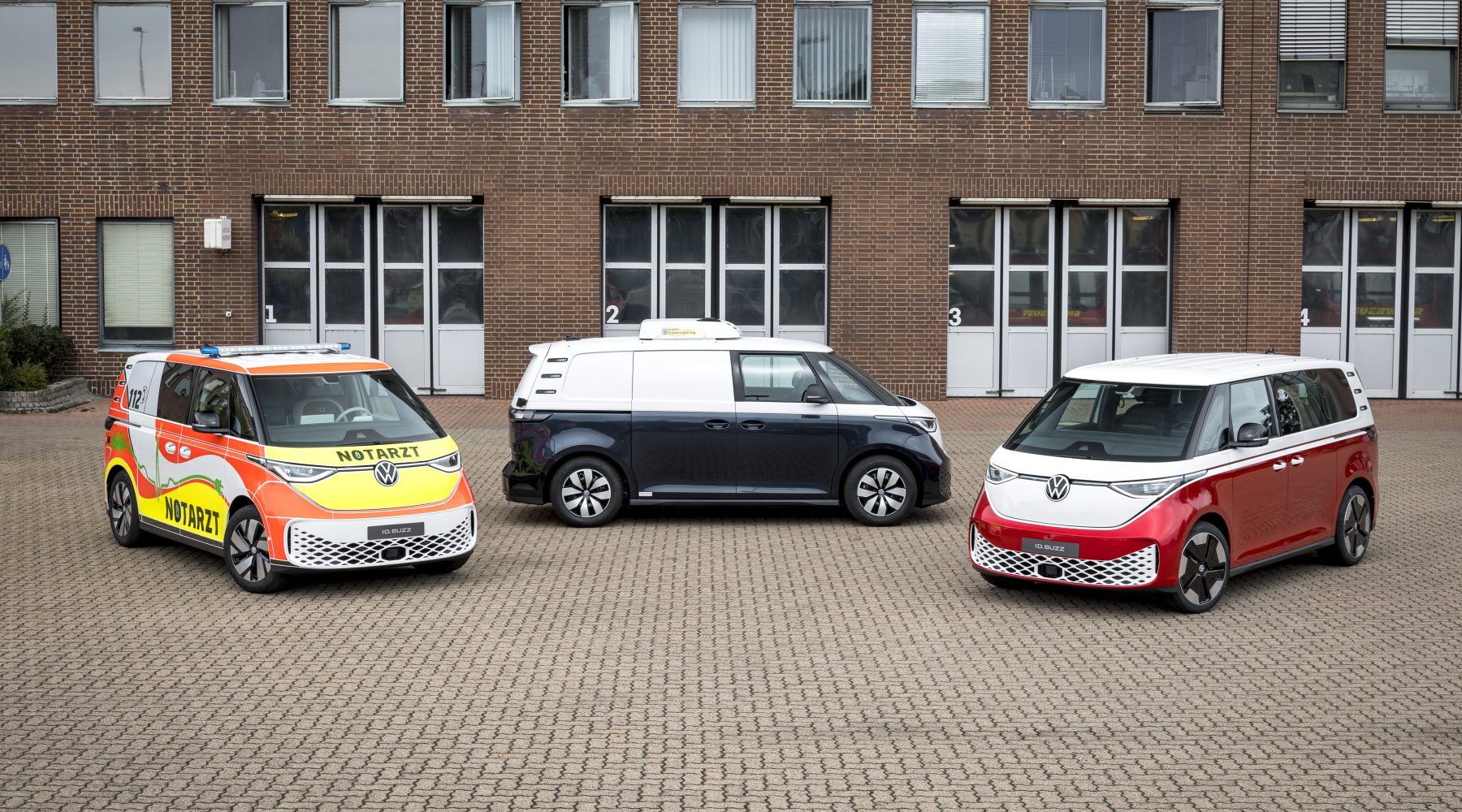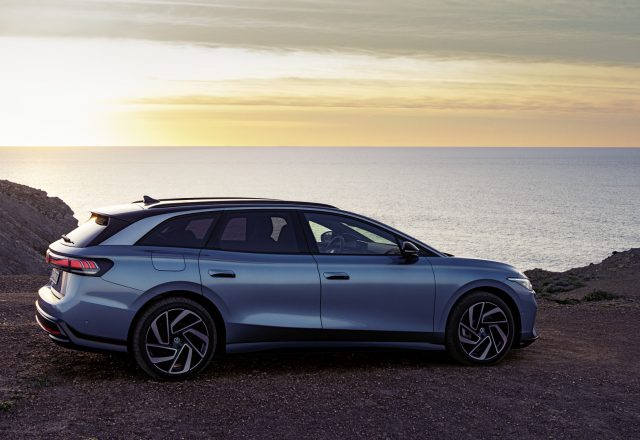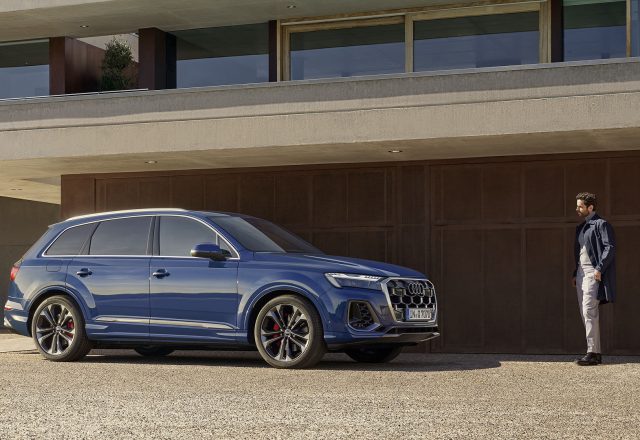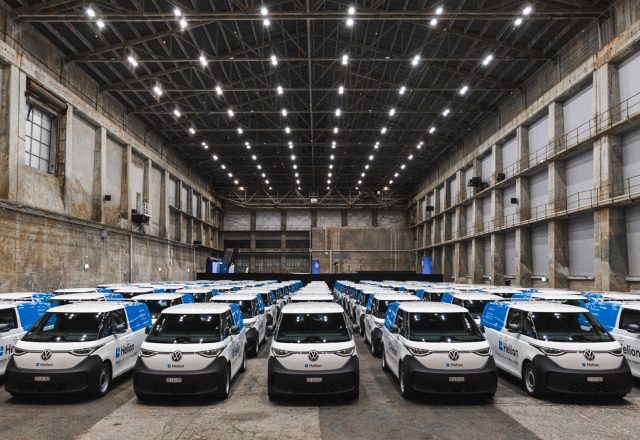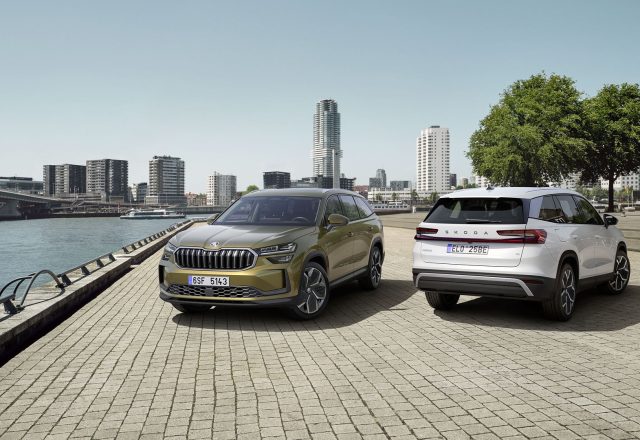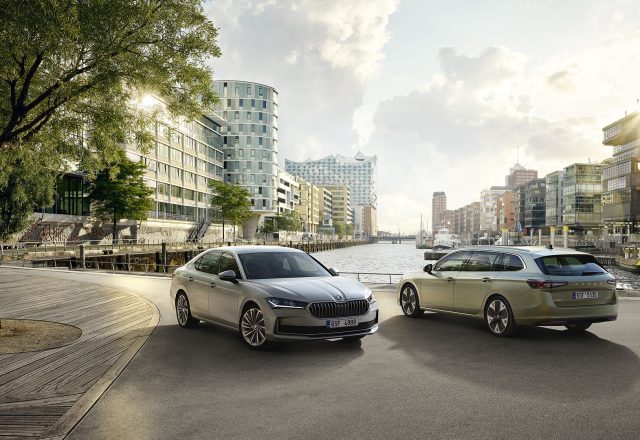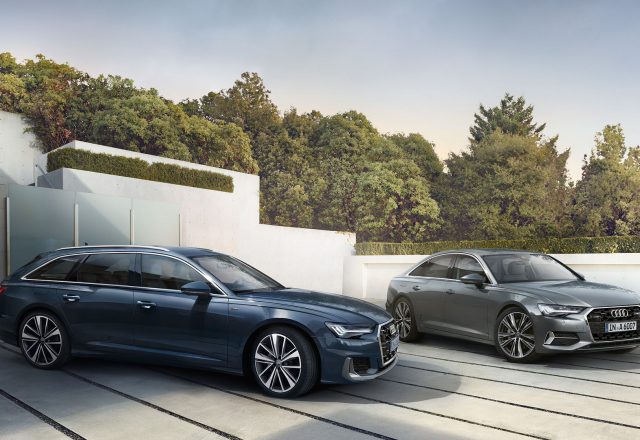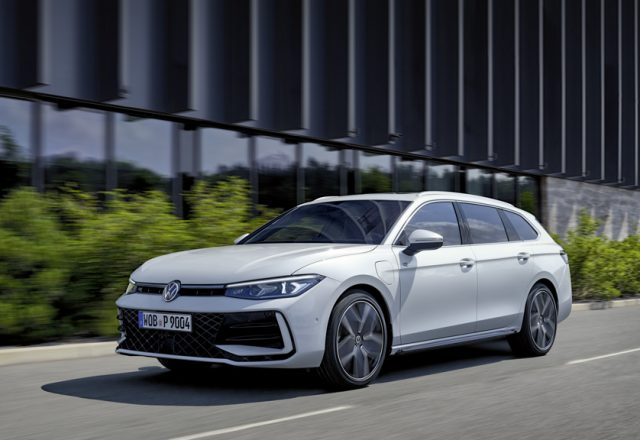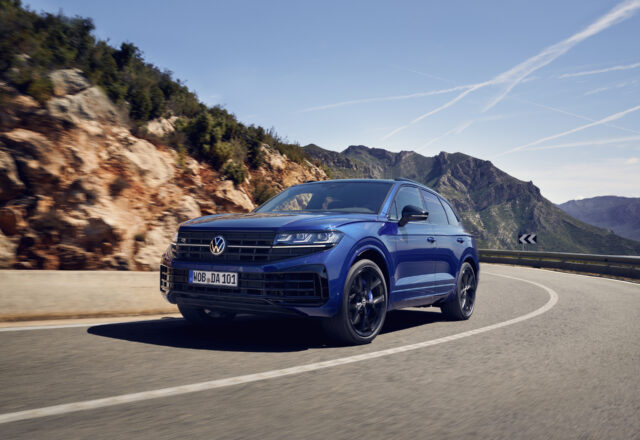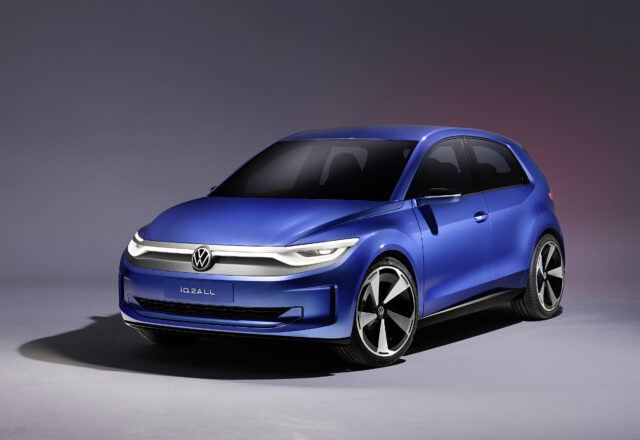An individually modified, fully-fledged commercial vehicle – but at the same time fully electric, sustainable and practical? Volkswagen Commercial Vehicles offers a glimpse into the future with four concept vehicles – starting with the ID. Buzz Cargo as a Miele customer service vehicle.
A few weeks ago in Gütersloh, Germany, household appliance manufacturer Miele, an early and long-standing fleet customer of Volkswagen Commercial Vehicles, took delivery of five ID. Buzz Cargo vehicles. Painted in Miele’s signature red, the ID. Buzz Cargo will be used by the company’s customer service staff. The cargo space of each vehicle has been fitted out with a shelving system tailored to the requirements of Miele service technicians. A centre console with integrated folding table also serves as a workspace for the driver. This ID. Buzz Cargo was developed according to Miele’s specifications in a collaboration between modification partner Würth and Volkswagen Commercial Vehicles. A typical dual-invoice vehicle, but one that points the way to the future: an individually modified, fully-fledged commercial vehicle that is at the same time fully electric, sustainable and practical.
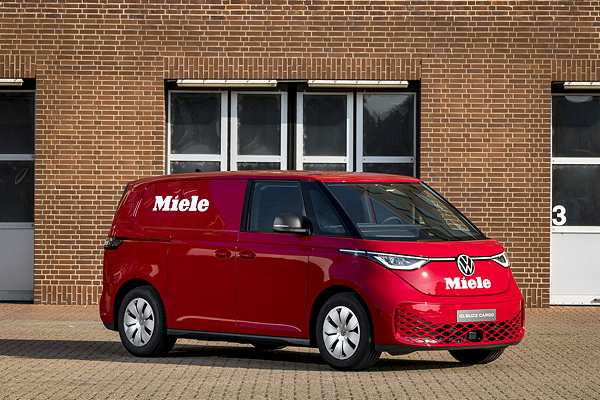
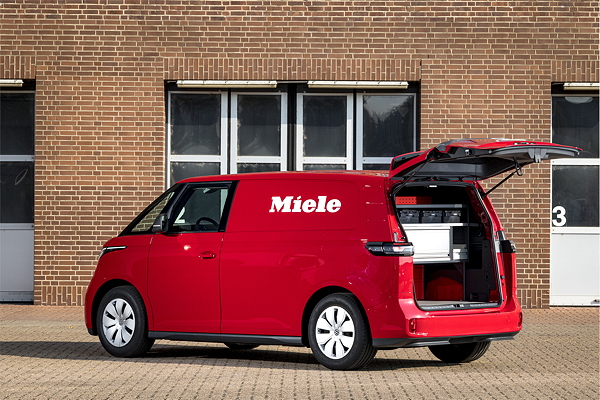
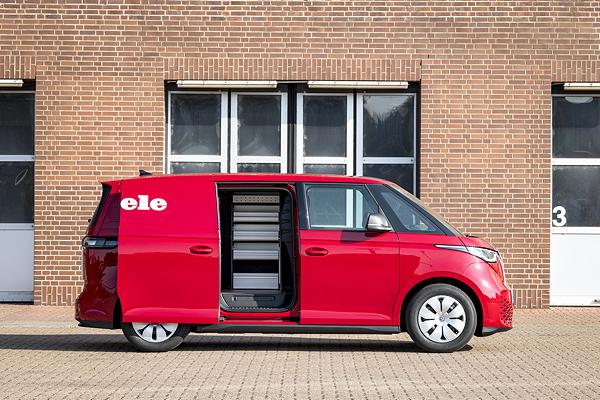
ID. Buzz Cargo: combined power consumption in kWh/100 km: 22.2–20.3 (WLTP); CO₂ emissions (combined) in g/km: 0. Only consumption and emission values according to WLTP and not according to NEDC are available for the vehicles. Information on fuel/power consumption and CO₂ emissions given in ranges depends on the equipment selected for the vehicle. Vehicle images show special equipment.
Four application scenarios
Of course, this type of specific development work is nothing new for Volkswagen Commercial Vehicles: the Hanover-based vehicle manufacturer has been collaborating with well-known bodywork professionals such as Würth for many years. The company works closely with fleet customers to create highly individual vehicle solutions, which, in line with new mobility requirements, increasingly feature electric drives. Four concept vehicles¹⁾ unveiled by Volkswagen Commercial Vehicles at IAA Transportation late last summer show the possibilities of the new, all-electric ID. Buzz and its commercial vehicle sibling ID. Buzz Cargo. The range extends from a Caravelle with a flexible cabin concept to an ambulance as well as a classic box body and refrigerated vehicle. So what are the distinguishing features of these vehicles? Below are four application scenarios.
ID. Buzz Flex-Cab concept¹⁾
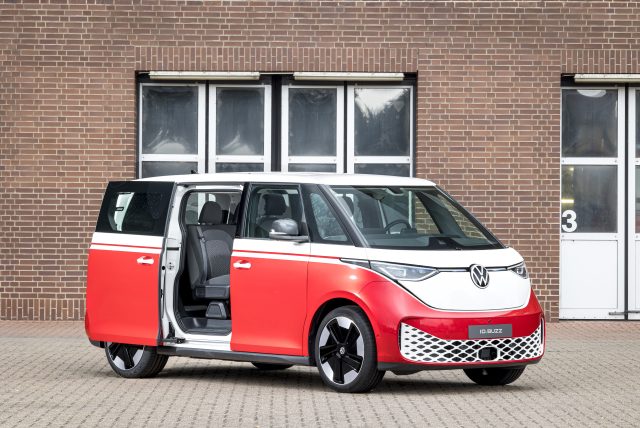
Dutch modification specialist Snoeks has fitted out an ID. Buzz Cargo for use as a people carrier. The five-seater Flex-Cab concept turns the ID. Buzz into an electric version of the Caravelle. In the rear, the concept vehicle has a three-person bench seat that can be used in two different lengthways positions – offering either standard or extra legroom – or folded up completely including the seat. The bench seat is adjusted and folded up and down using electronic controls on the B or D pillars. Thanks to the flexible bench seat, the air conditioning system can be adapted depending on whether there are passengers or goods in the rear. With the ID. Buzz Flex-Cab concept, Snoeks presents a highly innovative people carrier that can be used as a shuttle, taxi, community minibus or as a vehicle for tradespersons.
ID. Buzz paramedic’s vehicle¹⁾
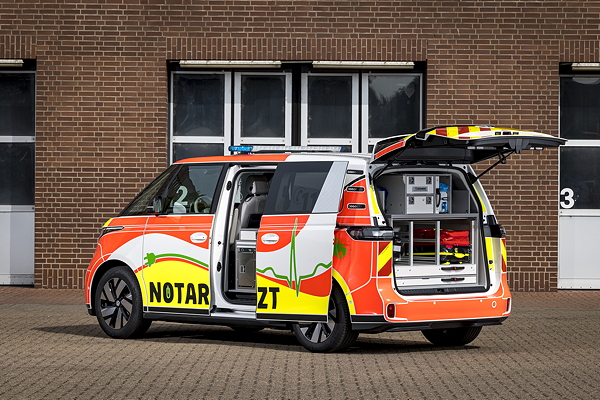
The new ID. Buzz was designed in such a way that it can also fulfil special tasks as a bus or van – for example as an emergency vehicle for use by paramedics. Electric mobility has finally arrived in this area. With a near-production concept vehicle, German body manufacturer Bösenberg shows how an ID. Buzz ambulance would look and what it could do. Up to three people can be accommodated on board the first ID. Buzz emergency vehicle. The cargo space has been converted into a paramedic’s workspace, complete with medical equipment. Bösenberg has developed a modular concept, which means that complete integration of the equipment and all special components requires only minimal changes to the basic vehicle. The concept also integrates special signal technology, which is operated via a separate battery system.
ID. Buzz Cargo with box body¹⁾
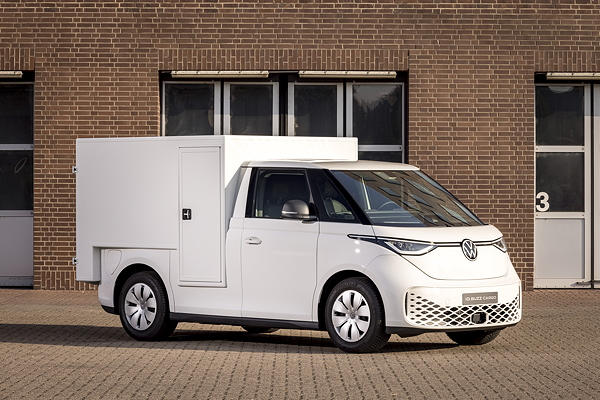
Dutch body manufacturer Veth Automotive has combined the iconic design of the ID. Buzz with a box superstructure at the rear to create the first ID. Buzz with a box body. The box increases the cargo space from an already impressive 3.9 m3 to 6.0 m3. The ID. Buzz Cargo can transport a payload of up to 680 kg. The sides and back of the can be fitted with conventional or sliding doors and/or roller shutters, which means that couriers can reach packages from any side.
The concept vehicle is fitted with a low door on the passenger side, with a roller shutter on the driver side and large wing doors at the rear. There’s also plenty of space for company logos and advertising. The inside of the box features a hard-wearing, non-slip floor to ensure that the cargo stays in place.
ID. Buzz refrigerated vehicle¹⁾
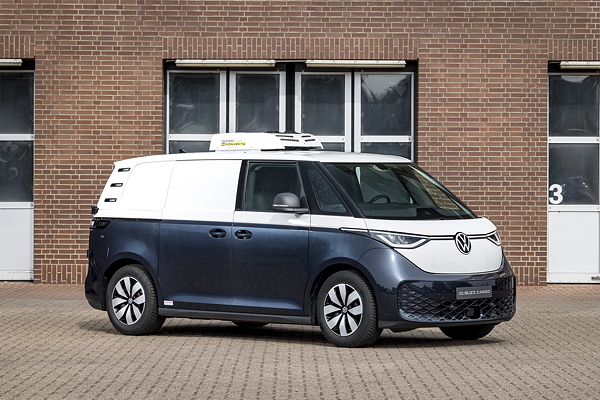
At the IAA show, German body manufacturer Wükaro presented the first refrigerated vehicle version of the ID. Buzz Cargo. It was specially designed for city centre delivery traffic and therefore intended for last-mile deliveries. The concept offers the unique combination of electric drive and electric cooling system. The cooling system comprises a low-profile 230-volt cooling unit on the roof (flat ceiling mounted evaporator), four lithium-ion batteries (each with 100 ampere hours of nominal charge) and an inverter (which converts DC voltage into AC voltage) with integrated battery charger. The four batteries of the cooling system, which are housed in the wheel arches to save space, enable the system to run independently for six to eight hours. In general, it is also possible to pre-chill the cargo space when the ID. Buzz Cargo is connected to the mains. Depending on the equipment, the concept can carry a payload of up to 390 kg – perfect for frozen food or restaurant deliveries or as an ice-cream van.
The concept vehicles are not currently available to order, but the production models of the new ID. Buzz and the new ID. Buzz Cargo can be ordered here:
1)The vehicle presented/described here is a concept vehicle that is not available as a production vehicle.
The specified fuel consumption and emission data has been determined according to the measurement procedures prescribed by law. On 1 January 2022, the WLTP test cycle replaced the NEDC test cycle fully. This means that NEDC values will not be provided for new type-approved vehicles after this date. The information does not refer to an individual vehicle and is not an integral part of the offer. It is provided solely for the purpose of comparison between the different vehicle types. Additional equipment and accessories (e.g. add-on parts, different tyre formats etc.) may change the relevant vehicle parameters, such as weight, rolling resistance and aerodynamics, and, in conjunction with weather and traffic conditions and individual driving style, may affect fuel consumption, electrical power consumption, CO₂ emissions and the performance figures for the vehicle. Because it involves more realistic testing conditions, the fuel consumption and CO₂ emission values calculated in accordance with the WLTP are in many cases higher than those calculated in accordance with the NEDC. As a result, there may be corresponding changes to vehicle taxation starting on 1 September 2018. Further information about the differences between WLTP and NEFZ can be found at www.volkswagen-nutzfahrzeuge.de/wltp.
Further information on official fuel consumption figures and the official, specific CO₂ emissions of new passenger cars can be found in the “Guide on the fuel economy, CO₂ emissions and power consumption of new passenger car models”, which is available free of charge at all sales dealerships and from DAT Deutsche Automobil Treuhand GmbH, Hellmuth-Hirth-Str. 1, 73760 Ostfildern-Scharnhausen or at www.dat.de/co2
Status: 06.12.2022
© Volkswagen Commercial Vehicles
